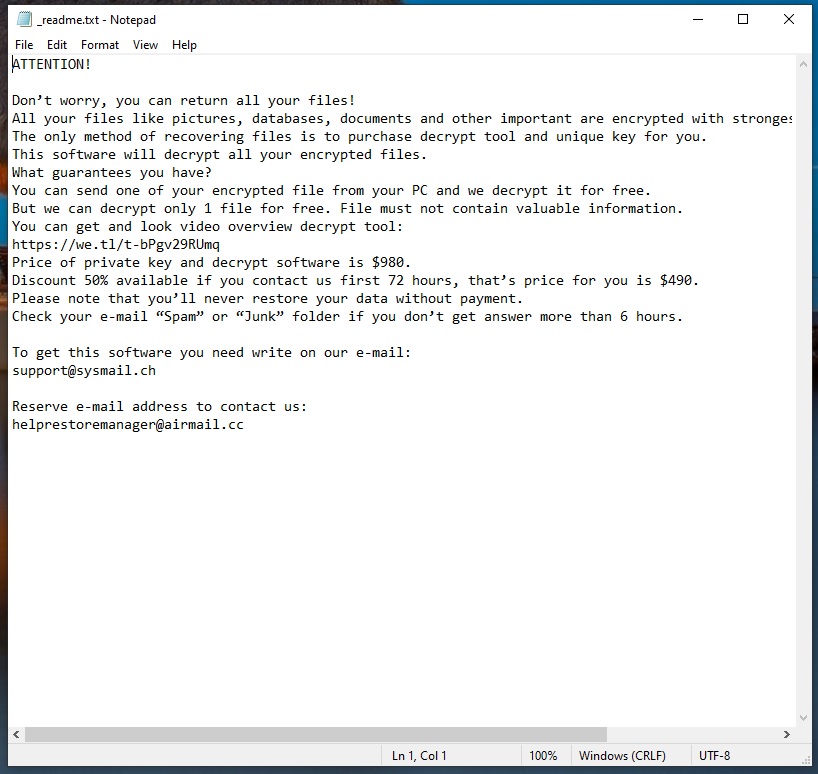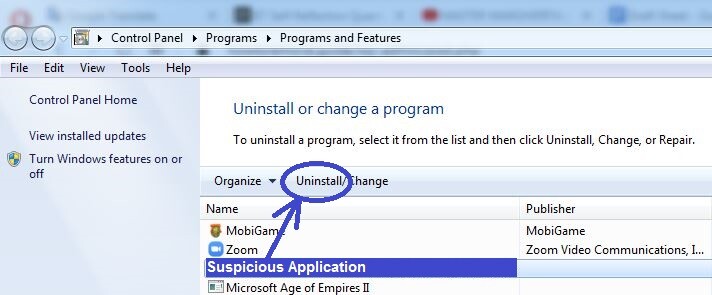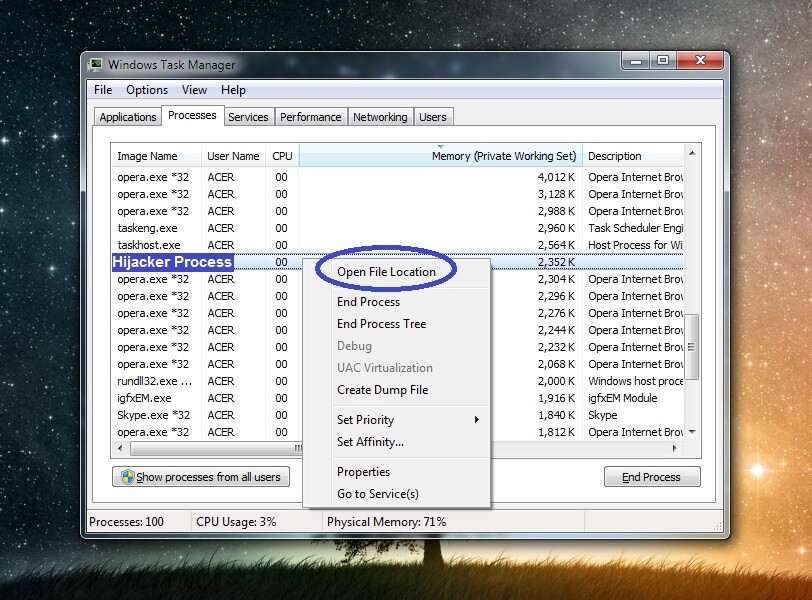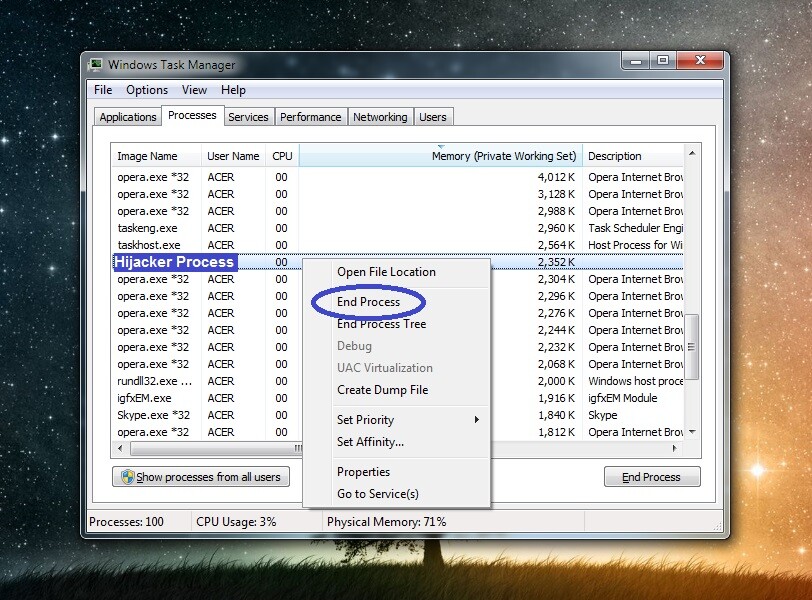*Jycx is a variant of Stop/DJVU. Source of claim SH can remove it.
Jycx
Jycx is a Ransomware cryptovirus that applies a strong encryption algorithm to the data found in an infected computer. When done with this, Jycx demands a fixed amount of money as a ransom to provide the victims with a file-decryption key.

After the secret encryption algorithm is applied, it becomes impossible to access your documents, projects, photos, and other important files. Decryption can only be achieved by using the unique decryption key that is stored in the hackers’ servers. The crooks are not going to give it to you for free, though. They make their ransom demands very clear by showing a ransom note on the victim’s screen immediately after the file-encryption process has completed. Usually, that note contains payment instructions and a deadline, after which the ransom will double if the money hasn’t been sent. Very often, to make the victims pay, the hackers use manipulative techniques to threaten them. For instance, they may scare the users that if they don’t pay, their files will remain encrypted forever, as the only key that can decrypt them will be destroyed. The last thing you should do, though, is let the panic take over you. Below, there are specific instructions on how to remove the infection, as well as some tips you could try in order to restore some of your files.
The Jycx virus
The Jycx virus is a Ransomware infection designed to encrypt digital data for the purpose of online blackmailing. The creators of the Jycx virus demand a ransom from their victims in order to provide a decryption key for the encrypted information.

Ransomware is a stealthy type of malware that spreads across the web via many different transmitters. Targeted spam email campaigns are the most common way hackers distribute threats of this kind. Typically, the email that carries the infection contains malicious links or attachments that look attractive and prompt the users to download or click on them. The victims activate the harmful payload the moment they click on those attachments and this is how they introduce the Ransomware into their systems. Trojan Horses can also be effectively used for inserting threats like Jycx into computers as they can exploit existing system security holes and remain under the radar of most security programs.
The Jycx file extension
The Jycx file extension is an unfamiliar file extension that the Jycx Ransomware adds to the files that have fallen under its encryption. The files with the Jycx file extension will return an error message every time you try to open them, as they cannot be recognized by any software.
So what to do if you have been infected with Jycx, Jywd or Jyos and can’t access any of your personal files? Well, panicking would certainly not help you. That’s why we suggest you run a full scan of your system if you have an antivirus program. Ideally, such software can help you detect the malware you need to remove. If you have any recent copies of your data files on an external drive or cloud storage, you can quickly recover some of your files from there. Just don’t connect any backup sources before you remove Jycx from your system. Otherwise, the active Ransomware may encrypt the files that you manage to recover, including the backup source that has been connected to the infected computer.
SUMMARY:
| Name | Jycx |
| Type | Ransomware |
| Danger Level | High (Ransomware is by far the worst threat you can encounter) |
| Detection Tool |
*Jycx is a variant of Stop/DJVU. Source of claim SH can remove it.
Before you start
Below, we’ve listed a couple of important notes that you should take into account before you begin the removal of the Jycx virus.
- First, if you haven’t already done that, it is very important to disconnect any phones, tablets, external HDDs, USB sticks, or other external devices that have their own memory from your computer to stop the virus from infecting them and encryption their files.
- Secondly, although we encourage our readers to seek other recovery methods rather than paying the ransom, if you are still thinking to opt for that, it may be better if you do not remove Jycx until you make the money transfer and (hopefully) recover your files. If you remove the virus first, you may not have the option to get the decryption key from the blackmailers.
- Thirdly, before you start the guide, disconnect the computer from the Internet, so that Jycx won’t be able to receive new instructions from its creators.
- Last but not least, even if it seems that the Ransomware has already automatically deleted itself, it’s still best to complete the guide regardless of that to make sure the system is clean.
Remove Jycx Ransomware
To remove Jycx, every rogue process, program, setting, or file that you can find in the system must be deleted.
- Start by searching for a program in the computer that may have started the whole infection and uninstall it.
- Then proceed to search for still running Ransomware processes in the Task Manager.
- You must also check the Hosts file, the System Registry, and the Startup items for changes made by the virus and restore things back to normal.
- Lastly, to remove Jycx from your computer, there are several folders that you must clean from files that may be from the virus.
To correctly complete each of those steps, please, carefully read and follow the instructions and tips shown below.
Detailed Guide

Starting with the search for harmful programs, the easiest way to see if there is any rogue program on your computer is to open the Start Menu and to go to Control Panel > Programs > Programs and Features. In that window, look at the listed programs and see if there is an item added right before the Ransomware infection happened. If there is such an item, and you don’t recognize it, or you think it may be harmful, click on its name, then on the Uninstall option, and proceed with the uninstallation process.
During the removal of the program, opt out of any options that would allow data from the unwanted program to be allowed to stay on the computer.


WARNING! READ CAREFULLY BEFORE PROCEEDING!
*Jycx is a variant of Stop/DJVU. Source of claim SH can remove it.
The Task Manager tool can be started using the Ctrl + Shift + Esc key combination so press those keys together to open it and then select Processes.
Sort the list either by the amount of RAM memory or CPU that the processes are consuming, and then look at the ones that have the highest usage of the respective system resource. Pay attention to their names and if any of them seem odd, unfamiliar, and/or unrelated to regular programs that are presently running in the system, use the browser on your phone or another device connected to the Internet (since the Internet connection on your PC should be stopped during the guide) to find information about the suspected process. If the latter is dangerous to the system, there would likely be posts on security sites and forums that warn you about it.
One other good method of learning about whether the process may be harmful is to scan each of its file. To do this, go to its File Location folder by right-clicking it and selecting the first option from the menu. Then use the free online scanner we’ve provided below to test each file and see if it is infected. Even if only one of the scanned file is flagged as dangerous, this would confirm that the process should probably be stopped.


If you’ve determined that the suspected process is indeed a threat, you must first end it (right-click on the process > End Process) and then get rid of its folder. If one or more of the files from that folder can’t be removed, eliminate the rest, and return to delete what remains after the end of the guide.


Next, boot into Safe Mode – this will keep any more rogue processes from getting started in the system while you are going through the rest of the guide.

*Jycx is a variant of Stop/DJVU. Source of claim SH can remove it.
Open the Start Menu, use its search box to search for “Folder Options” and open the item that appears. In the Folder Options window, select View, then find a setting labelled Show hidden files, folders, and drives, enable it, and select OK.
After that, you must visit each of the folders below – do this by copying their names together with the two “%” symbols on either side, pasting them in the Start Menu, and pressing Enter after each.
- %AppData%
- %LocalAppData%
- %ProgramData%
- %WinDir%
- %Temp%
All data created on and after the date you think Jycx infected you must be deleted from the first four folders. As for the last one, the one named Temp, simply delete everything that is stored in it – it’s all temporary data which can safely be deleted.

For this next step, you must once again use the Start Menu search bar, type msconfig in it, and press Enter to open the System Configuration window. In it, you will see a tab labelled Startup – select it and then look at what items are listed there. You should untick any items that are unknown to you or that have “unknown” in the column labelled Manufacturer. After that, remember to select OK so that the changes would be saved.
Next, go to the hard drive where your Windows OS is installed – on most computers, that drive is C:. Once you go to it, navigate to the following location: Windows/System32/drivers/etc. In it, there should be a file named Hosts – double click it and then select Notepad when asked to pick a program with which to open it.
In the Hosts file, see if any text is written below the “Localhost” line and if anything is written there (strange IPs, program rules, or anything else), copy it and paste it in the comments section for this article. Once we examine your comment, we will tell you if the text you copied from your Hosts file indicates malware manipulation and if it should be deleted from the file.

If no text was found below “Localhost“, directly go to the following step.

Search for the regedit.exe executable using the Start Menu search field, open the executable, and click on Yes when asked for confirmation.
When you see the Registry Editor window on your screen, press Ctrl + F, type Jycx, and then select Find Next to search for malicious items related to the Ransomware. If you find anything, delete it and search again – always perform one extra search after every deleted item to ensure there aren’t more.

Once you are no longer finding results for Jycx, navigate to each of the three directories shown below using the left sidebar in the Registry Editor:
- HKEY_CURRENT_USER > Software
- HKEY_CURRENT_USER > Software > Microsoft > Windows > CurrentVersion > Run
- HKEY_CURRENT_USER > Software > Microsoft > Internet Explorer > Main
Carefully explore what items are shown in each of those locations, looking for ones with randomly-generated names that look similar to this “23089ru32989824th4982ru0831ut894rut984rr98t“. If there are such items, they should be deleted. However, if you don’t know if something is not supposed to be there and must be removed, always be sure to first ask us through the comments before you delete anything that you are not sure about.
If the manual steps didn’t help If you still suspect Jycx is in the system even after having completed all of the steps from this page, it is recommended that you either get the computer to a professional or that you get a powerful and effective anti-malware tool that can fight the threat. For obvious reasons, we cannot personally check your computer, but what we can do is offer you a reliable malware-removal program capable of dealing with all sorts of threats. It will help you delete Jycx as well as any other threats that could be hidden in the computer’s system, and it will also protect you in the future from incoming threats.
How to Decrypt Jycx files
To decrypt Jycx files, you must first clean the system from all malware data, so that the virus doesn’t prevent you from recovering your locked files. After that, you can try the various alternative data-restoration methods to decrypt you Jycx files without paying a ransom.
To make sure that the computer no longer has virus data on it, we once again remind you to use the scanner tool available for free on our site to test any sketchy-looking data for malicious code.
Decryption tool
https://www.emsisoft.com/ransomware-decryption-tools/stop-djvu
Once you are certain that the system is clean, we recommend visiting our How to Decrypt Ransomware article, where we have shown and explained the most effective alternative recovery techniques that we have been able to find.
Jycx is a piece of malware recognized as Ransomware and is responsible for encrypting the files of its victims and demanding a ransom payment for their release. Once Jycx completes the encryption process, it creates a note in which the ransom-payment instructions are provided. Unlike other malicious programs, Jycx and other Ransomware threats do not harm the system or make any significant changes in it. This often allows them to stay below the radar of any security software or built-in protection features that the system may have. In most cases, the user finds out about the malware attack through the ransom-demanding note that Jycx displays on their screen. This is one of the many reasons that makes prevention the best way of dealing with this type of attack. If it is too late for your files, and they have already been encrypted by Jycx, it’s advisable to seek alternative recovery methods rather than giving in to the demands of the criminals behind the virus and paying them the required ransom.
Jycx is a type of computer virus categorized as a file-encrypting Ransomware that blocks access to its victims’ files and asks for a ransom payment to release them. Threats like the Jycx virus are often helped by Trojans in order to infiltrate the system. In many cases, the attack starts with a disguised Trojan Horse that the user downloads, unaware of its malicious nature. Once in the system, the Trojan secretly downloads the Ransomware and activates it. In many cases, the Trojan also helps the Ransomware threat remain undetected by the user’s antivirus program. While there may be certain symptoms of the ongoing encryption process, such as a dip in the computer’s performance due to excessive use of RAM and CPU, it’s very rare for Ransomware victims to notice this. Since the hackers behind Jycx have no way of knowing which of your files are important to you, they set the virus to seek out specific commonly-used file types such as text documents, different images, audio, and video formats, spreadsheets, etc. and lock them.
To decrypt Jycx files, you can either choose to pay the ransom or try some alternative data-restoration methods. Our advice for you is to try to decrypt Jycx files through such alternative methods rather than opting for the ransom payment. There are many reasons why we discourage our readers from sending their money to the blackmailers. The main one is that you simply don’t know what the hackers will do next – there’s no guarantee that they won’t refuse to provide you with the decryption key, yet keep the ransom money. Also, if they are no longer using the virtual wallet indicated in the ransom note, you may end up sending your money to someone else, effectively wasting it for nothing. On the other hand, even though there’s no guarantee that the alternatives you may try will work for you, this option at least doesn’t involve risking your money by sending it to the people who are responsible for your current situation.

Leave a Comment